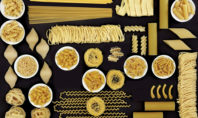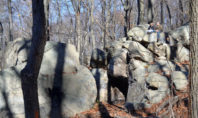Matt Halm
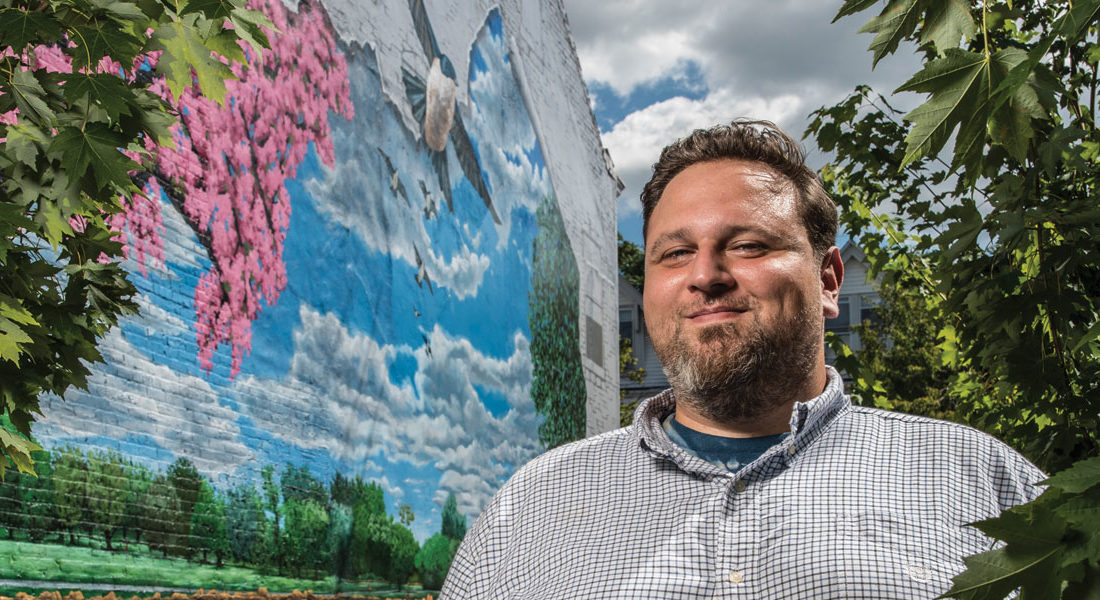
Some artists use photography as their canvas, some prefer clay or metal, some have a flair for fashion, and others, well, they keep it literal and use a canvas as their canvas. Then there’s Matt Halm – he uses entire neighborhoods.
“You remember being there and looking at a wall on a building with nothing there and you get to see how you created something that really transformed not just that space, but the feeling of the block.” – Matt Halm, artist
Halm, a 36-year-old who grew up on the south side of Allentown, now spends his days wrapping the walls and facades of his old stomping grounds in vibrant and public reflections of the city’s spirit. He’s a muralist with more than 15 large-scale pieces on display that have been commissioned by clients such as the Community Action Network of Allentown, Good Shepherd Rehabilitation Hospital, the Bethlehem Parks Department, and Colgate University.
His grandmother, also an artist, helped ignite his creative passion by encouraging him to draw. Halm realized he was onto something when he sold his Teenage Mutant Ninja Turtle doodles to other students, netting him milk money from his illustrations. When he got to high school, Halm began to focus even more seriously on his art.
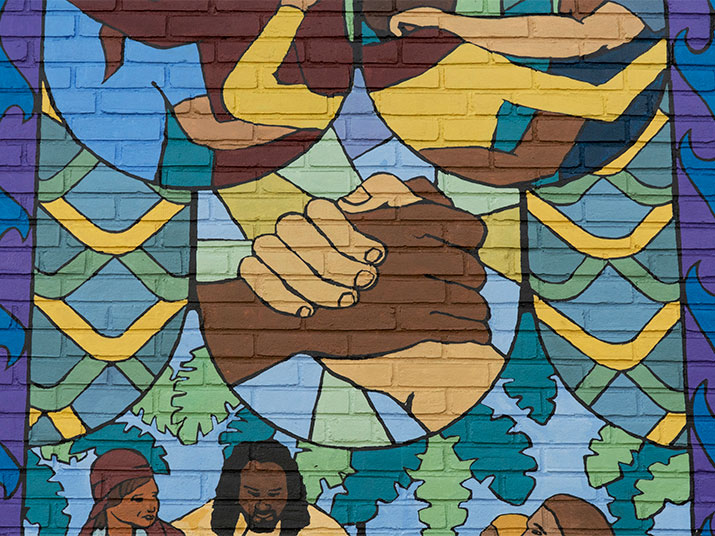
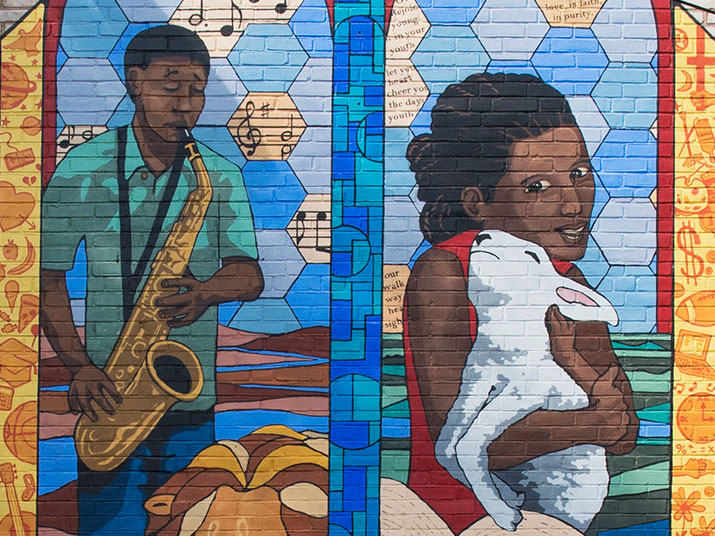
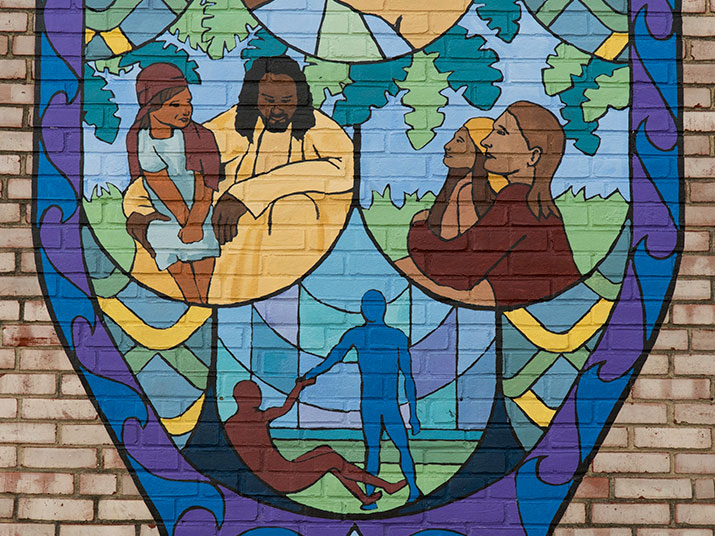
“High school was when I really saw art as something you could make a living out of – an actual career – if you put in the hard work and practice enough,” Halm says. This revelation – that his hobby could also pay the bills – led him to Syracuse University in New York, where he studied illustration and painting.
After college, Halm returned to the Lehigh Valley in a bit of a post-grad funk, unsure of his next move. That’s when he came across a fledgling art program that was looking for muralists.
“Being young and brash, I was like, ‘Well, I can paint a painting, so I’ll be able to do this no problem,’” Halm recalls, laughing.
He was hired as an assistant artist, learning from three other experienced muralists, and began working on murals in Allentown. He was hooked, and in 2008, Halm leapt at the opportunity to create his own mural.
“I really saw the power of murals,” Halm says. “You take an empty space – something that people probably don’t look twice at – and you create something that’s hopefully beautiful. Just on the very surface, it’s beautifying a space, which creates quite a reaction from people. On top of that, I’m always hoping to make people think and to make them feel inspired. If it’s done right, murals can start dialogues, conversations about living in that space, in that community. And, hopefully, it will bring a positive message.”
Halm also saw the ownership of murals – or lack thereof. After completing his first mural, the ownership of the wall changed, and the mural was taken down by the new owner. Because murals are community pieces, they also require community input, which makes for an unconventional creative process.
“It’s a challenge taking many varied ideas and making one cohesive piece of artwork that has mass appeal that speaks to people but is also original enough and true enough to myself as an artist to be fulfilling,” Halm says.
It is, however, also that challenge that makes the final piece all the more satisfying. Then, of course, there’s a matter of scale: Halm’s sketches have to make sense not only on paper, but on a building. His final sketch is a drawing that is in direct proportion to the wall, and he transfers the image via a grid system – 1 inch of space on the sketch means 1 foot on the wall to ensure correct proportions and proper placement. The largest mural Halm has completed is on Chew St. in Allentown, and it took more than two months to complete. The mural spans two walls – one 55 feet long by 30 feet high, the other 30 feet by 25 – and creates a lush “pocket park” scene in an otherwise urban setting.

There are also the unique working conditions to consider: outside, in the open, and, at times, 20 feet in the air on scaffolding. Unlike the stereotypical artist who doesn’t want anyone to see his work before it’s finished, murals are on display in every stage of its creation and the artist is present for compliments and criticism from passersby. More than that, Halm can physically only focus on one section of the mural at a time, but that makes finishing it that much sweeter.
“When you’re on the scaffolding, you don’t get to see the whole thing at one time,” he says. “But at the end, it’s such a neat feeling. You remember being there and looking at a wall on a building with nothing there and you get to see how you created something that really transformed not just that space, but the feeling of the block. That part is very gratifying and fulfilling as an artist.”
If the muralist wasn’t painting, Halm says he’d probably be a fisherman – mostly because he loves fishing and has always been determined to have his career be something he truly loves to do – but he wouldn’t trade the feeling he gets when he drives or walks by one of his pieces.
“I feel a sense of pride that I was able to bring some beauty into the world and that it’s not tucked away and it’s not exclusive to being inside of a museum or gallery,” he says. “Every day, people see some of my murals on their way to work or home, and that’s an honor, to have my work on permanent display.”




